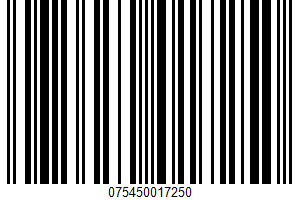Salsa Con Queso - 80 calories
Manufacturer Hy-vee, Inc.
Product Information and Ingredients
Salsa Con Queso is manufactured by Hy-vee, Inc. with a suggested serving size of 2 Tbsp (30 g) and 80 calories per serving. The nutritional value of a suggested serving of salsa con queso includes 5 mg of cholesterol, 0 mg of sodium, 5 grams of carbohydrates, 0 grams of dietary fiber, 4 grams of sugar and 1 grams of proteins.
The product's manufacturer code is UPC: 075450017250.
Calories from fat: a total of 67.5% of the total calories in this suggested serving come from fat. Try to consume less than 10 percent of daily calories from saturated fats.
Ingredient List
- Water
- Soybean Oil
- Whey
- Cheese (pasteurized Milk
- Cheese Cultures
- Salt
- Enzymes)
- Tomato Paste
- Less Than 2% Sodium Phosphate
- Salt
- Red Bell Peppers
- Modified Food Starch
- Lactic Acid
- Green Bell Peppers
- Vinegar
- Xanthan Gum
- Dehydrated Onions
- Jalapeno Peppers
- Sorbic Acid (as A Preservative)
- Garlic Powder
- Nacho Seasoning (chili Peppers
- Spices
- Dehydrated Onion And Garlic
- Paprika
- Natural Flavor
- Maltodextrin)
- Hot Pepper Concentrate

Nutrition Facts
Serving Size 2 Tbsp (30 g)
| Amount Per Serving | ||
|---|---|---|
| Calories 80 | Calories from Fat 54 | |
| % Daily Value* | ||
| Total Fat 6g | 3% | |
| Saturated Fat 1.5g | 2% | |
| Trans Fat 0g | ||
| Cholesterol 5mg | 1% | |
| Sodium 0mg | 0% | |
| Total Carbohydrate 5g | 1% | |
| Dietary Fiber 0g | 0% | |
| Sugars 4g | ||
| Protein 1g | ||
| Vitamin A 0% | Vitamin C 0% |
| Calcium 1% | Iron 0% |
* Percent Daily Values are based on a 2,000 calorie diet.
Nutrition Facts
Serving Size 100g (about 3.52 oz)
| Amount Per Serving | ||
|---|---|---|
| Calories 267 | Calories from Fat 180 | |
| % Daily Value* | ||
| Total Fat 20g | 9% | |
| Saturated Fat 5g | 8% | |
| Trans Fat 0g | ||
| Cholesterol 17mg | 2% | |
| Sodium 1633mg | 20% | |
| Total Carbohydrate 16.7g | 2% | |
| Dietary Fiber 0g | 0% | |
| Sugars 13g | ||
| Protein 3g | ||
| Vitamin A 0% | Vitamin C 0% |
| Calcium 4% | Iron 0% |
* Percent Daily Values are based on a 2,000 calorie diet.
Salsa Con Queso Nutritional Value
| Nutrient | Suggested Serving 2 Tbsp (30 g) | Standard Serving 100g |
|---|---|---|
| Energy | 80 kcal (1%) | 267 kcal (4%) |
| Protein | 1 g (1%) | 3.33 g (2%) |
| Total Lipid (fat) | 6 g (3%) | 20 g (9%) |
| Carbohydrate, By Difference | 5 g (1%) | 16.67 g (2%) |
| Fiber, Total Dietary | 0 g (0%) | 0 g (0%) |
| Sugars, Total | 4 g (5%) | 13.33 g (16%) |
| Calcium, Ca | 55 mg (1%) | 183 mg (4%) |
| Iron, Fe | 0 mg (0%) | 0 mg (0%) |
| Sodium, Na | 490 mg (6%) | 1633 mg (20%) |
| Vitamin D | 0 IU (0%) | 0 IU (0%) |
| Fatty Acids, Total Saturated | 1.5 g (2%) | 5 g (8%) |
| Fatty Acids, Total Trans | 0 g (0%) | 0 g (0%) |
| Cholesterol | 5 mg (1%) | 17 mg (2%) |
Calories Burn off Time
How long would it take to burn off Hy-vee, Inc. Salsa Con Queso with 80 calories? A brisk walk for 17 minutes, jogging for 8 minutes, or hiking for 13 minutes will help your burn off the calories in salsa con queso.
Burn off time varies based on your weight, physical activity and exercise intensity. The following physical activity table contains an estimated burn off time for a person weighting 154 lbs.
| Physical Activity | Burn Off Time |
|---|---|
| Bicycling - 10 mph or less | 17 minutes |
| Dancing | 15 minutes |
| Golfing | 15 minutes |
| Hiking | 13 minutes |
| Light Gardening | 15 minutes |
| Stretching | 27 minutes |
| Walking - 3.5 mph | 17 minutes |
| Weight Training - light workout | 22 minutes |
| Aerobics | 10 minutes |
| Basketball | 11 minutes |
| Bicycling - 10 mph or more | 8 minutes |
| Running - 5 mph | 8 minutes |
| Swimming | 9 minutes |
| Walking - 4.5 mph | 11 minutes |
| Weight Training - vigorous workout | 11 minutes |
Footnotes
Percent daily values are based on a 2,000 calorie reference diet. Factors like age, gender and level of physical activity may affect your daily required values.
The editorial opinions regarding food value or quality in this website are given without warranty, and are not intended to replace medical advice or a nutritionist guidance.
Dietary Recommendations
A healthy eating pattern that accounts for all foods and beverages within an appropriate calorie level could help achieve and maintain a healthy weight and reduce the risk of chronic disease. Healthy eating habits include the following:
- Vegetables from all subgroups, including dark, green, red and orange vegetables and also beans and peas
- A variety of whole fruits
- Grains with at least half of which are whole grains
- Low or fat free dairy products, including milk, yogurt, cheese and/or fortified soy beverages
- Protein foods, including seafood, lean meats and poultry, eggs and nuts
- Oils with limited amounts of saturated fats and trans fats, added sugars, and sodium
